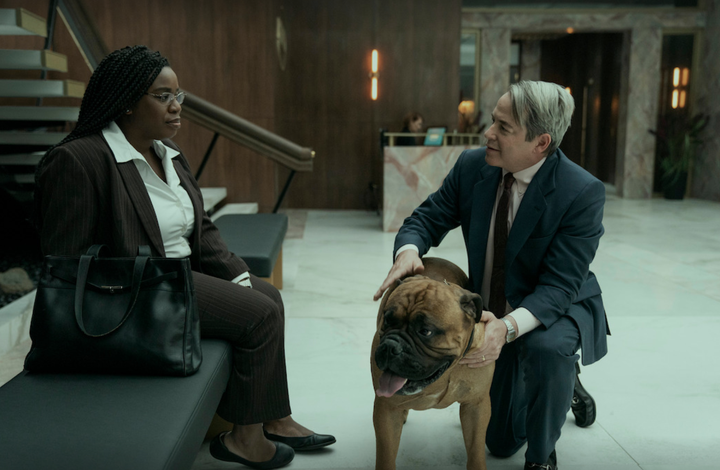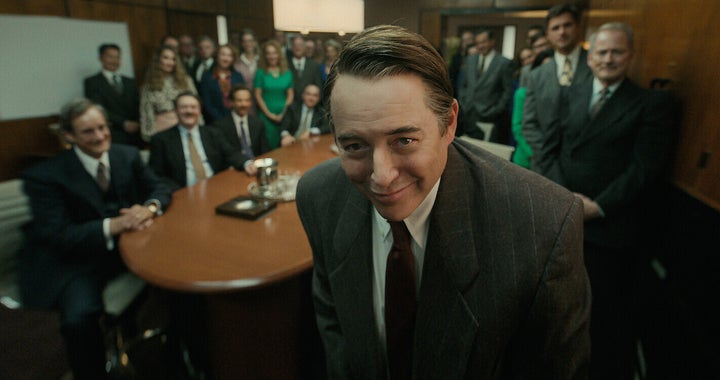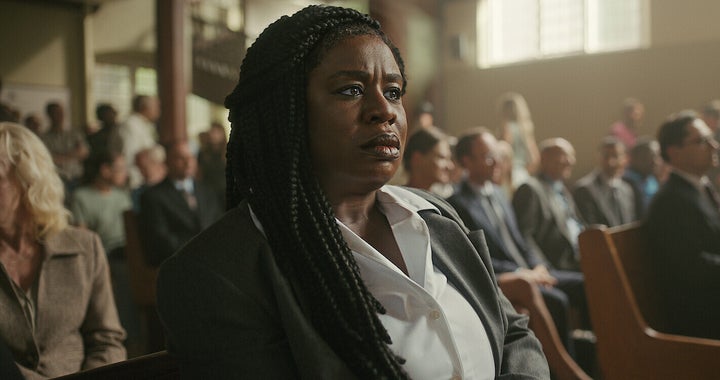
Painkiller is the new Netflix series that everyone is talking about, and like many of the streaming service’s most popular offerings, it’s based on real life.
The show tells the true story of Purdue Pharma, the company responsible for manufacturing and selling the highly-addictive drug OxyContin, which in turn led to a rise in opioid use and addiction in the States.
Not everything in the mini-series, which is billed as a “fictional dramatisation” of true events, is taken from real life, though.
While the key events are true, and the Sacklers were indeed the family behind the company, many of the characters are fictionalised composites representing people whose lives were affected by the opioid crisis.
Here’s everything you need to know...
Painkiller is based on a non-fiction book
The Netflix show is inspired by a book of the same name by New York Times reporter Barry Meir, who wrote extensively on the opioid crisis and won a Pulitzer Prize for doing so.
Pain Killer’s blurb explains that 250,000 Americans are estimated to have died from overdoses involving prescription painkillers between 1999 and 2017, claiming it is “a plague ignited by Purdue Pharma’s aggressive marketing of OxyContin”.
During this time, the company’s owners, the Sacklers, made a huge amount of money – to the point where Forbes once named the family the 19th richest in the world.
“In Pain Killer, Barry Meier tells the story of how Purdue turned OxyContin into a billion-dollar blockbuster,” the blurb continues. “Meier breaks new ground in his decades-long investigation into the opioid epidemic.
“He takes readers inside Purdue to show how long the company withheld information about the abuse of OxyContin and gives a shocking account of the Justice Department’s failure to alter the trajectory of the opioid epidemic and protect thousands of lives.
“Equal parts crime thriller, medical detective story, and business exposé, Pain Killer is a hard-hitting look at how a supposed wonder drug became the gateway drug to a national tragedy.”
Who were the Sacklers?

Brothers Arthur, Mortimer, and Raymond Sackler grew up in Brooklyn, New York in the 1930s, and all trained as doctors before working together at a psychiatric centre in Queens. As physicians, they were pioneers of modern medicine, and fought for the end of lobotomies, promoted racial integration of blood banks and developed the use of ultrasounds.
In 1952, they bought pharmaceutical company Purdue-Frederick (which is glossed over in the show) and while the siblings had equal shares, Mortimer and Raymond oversaw the running of the business.
Arthur moved into medical marketing, working with companies including Pfizer and writing articles in medical journals to promote drugs which are well-known today, such as Valium. He died in 1987, before OxyContin was developed.
The two remaining brothers bought their sibling’s shares after his death, and in 1991, the company was renamed.
The business was truly a family one (some of the Sackler brothers’ descendants even sat on the board until as recently as 2018) and by 1999, Raymond’s son Richard Sackler (played in the show by Matthew Broderick) had become President of Purdue.
Where have I seen the name Sackler before?
If the world of Big Pharma is new to you but the “Sackler” name is ringing a bell, then it may well be thanks to the family’s interest in the arts.
Over the years, the Sacklers made huge donations (think: millions) to universities, galleries, museums and libraries around the world, and in return, entire spaces were named after them
London’s National Gallery had a Sackler Room until 2002, the Serpentine Sackler Gallery existed until the name was ditched in 2021 and the Victoria & Albert Museum had a Sackler Courtyard and Centre for Arts Education until 2022. The Sackler name was eventually removed from these spaces following pressure from activists.
The University of Cambridge still has three institutes named after the Sacklers, while King’s College London has one and Westminster Abbey is home to the Sackler Windows.
In their native US, New York City’s Metropolitan Museum of Arts, Yale, the Guggenheim Museum and the American Museum Of Natural History all had wings carrying the Sackler name until recently, too.
What is OxyContin and how did the Sacklers sell so much of it?

OxyContin is a brand name for Oxyocodone, an opioid painkiller used to treat moderate-to-severe pain. It was patented by Purdue Pharma in 1995 and works by suppressing the nervous system, meaning it can be used to treat a wide range of pain.
One of the things that made OxyContin unique compared to other Oxyocodone brands on the market was the fact it would dull pain for 12 hours, while others would provide relief for a maximum of six.
People who take it on a regular basis will develop a tolerance, so the longer somebody takes it, the more they’ll need to use. OxyContin was first available in tablets ranging from 10mg to 80mg. In 2000, Purdue released a super strength 160mg version.
Richard Sackler oversaw the marketing of OxyContin. As episode one of Painkiller shows, he deployed a strategy inspired by his uncle Arthur’s marketing work, which saw doctors being encouraged to prescribe the drug by an army of attractive sales reps, and learning about it at all-expenses paid for “conventions”.
It’s also been reported that the company funded studies which led doctors and OxyContin users to believe that the drug was totally safe, while deciding not to correct myths such as it being weaker than morphine.
When did the problems begin?

While issues with OxyContin, and the extent of its abuse, are now well-known, much of the details remained under wraps for years.
In 2018, Pain Killer author Meier published a New York Times piece which alleged that Purdue Pharma knew its pain “wonder drug” was being abused – with pills “being crushed and snorted, stolen from pharmacies and [...] some doctors were being charged with selling prescriptions” – as early as 1997.
By the turn of the millennium, medical journals were paying attention to its addictive nature, and over a decade later, in 2012, links between OxyContin and the US’s heroin addiction issues had also been drawn, with 76% of people seeking help for heroin use stating that their problem began with pharmaceuticals, according to one study.
From 1995 until 2010, when OxyContin was finally removed from sale, Purdue Pharma made an eye-watering amount of money from its distribution and in 2020, Forbes estimated the amount of revenue it generated to be $30 billion (around £23.5 billion).
Which Painkiller characters were real people?
The Sackler brothers Mortimer and Raymond are played by John Rothman and Sam Anderson respectively, while Matthew Broderick plays the aforementioned Richard, Raymond’s son.
The Painkiller characters who succumb to the drug are fictional, though they represent real Americans who found themselves facing addiction issues. Dogged lawyer Edie Flowers (played by Orange Is The New Black’s Uzo Aduba) is also a composite character, representing the prosecutors and officials who watched the opioid crisis rip through their communities.
Likewise, sales representative Shannon Schaffer (played by West Duchovny) is fictional, but based on testimony from people who really did the job.
Each of the moving testimonies which precede the Painkiller episodes are completely real, and not being read by actors.

What happened to the Sackler family?
Lawsuits. Lots of lawsuits. At the age of 93, Mortimer died in 2010 and his brother, then 97, passed away in 2017. Both of them were still alive to see US states begin filing lawsuits against Purdue, accusing them of misrepresenting OxyContin and playing an undeniable role in the opioid crisis.
In 2007, Purdue agreed to a $600 million (£471 million) penalty on a felony charge of misleading and defrauding physicians and consumers. At the same time, its then CEO, general counsel and former chief medical officer each agreed to pay $34.5 million (£27bn) in fines too.
In 2015, Richard paid a settlement of $24 million (£18.8m) after a filing over the marketing of OxyContin in Kentucky and by 2020, Forbes reported that almost all of the 50 US states had filed a lawsuit against the company.
The Sacklers have not admitted wrongdoing, but a settlement including a $6 billion (£4.7bn) contribution from the living Sacklers was agreed last year. However, the US Supreme Court blocked this in early August amid growing pressure from activists unhappy that the deal would shield the Sacklers – who still have billions of dollars made from OxyContin – from any additional civil lawsuits.
Richard is now 78, and lives his life away from the spotlight. He hit headlines last year when the New York Post reported on his decision to sell multiple properties amid the $6bn settlement agreement.
Purdue filed for bankruptcy amid the legal settlements in 2019, and the company became a new firm, Knoa, which the Sacklers do not have any involvement in.
Knoa, owned by a trust, has vowed to “develop and distribute millions of doses of opioid addiction treatment and overdose reversal medicines”.
